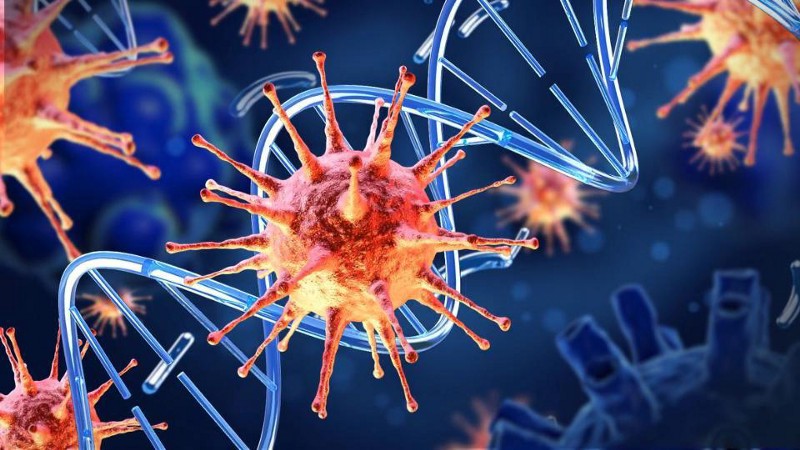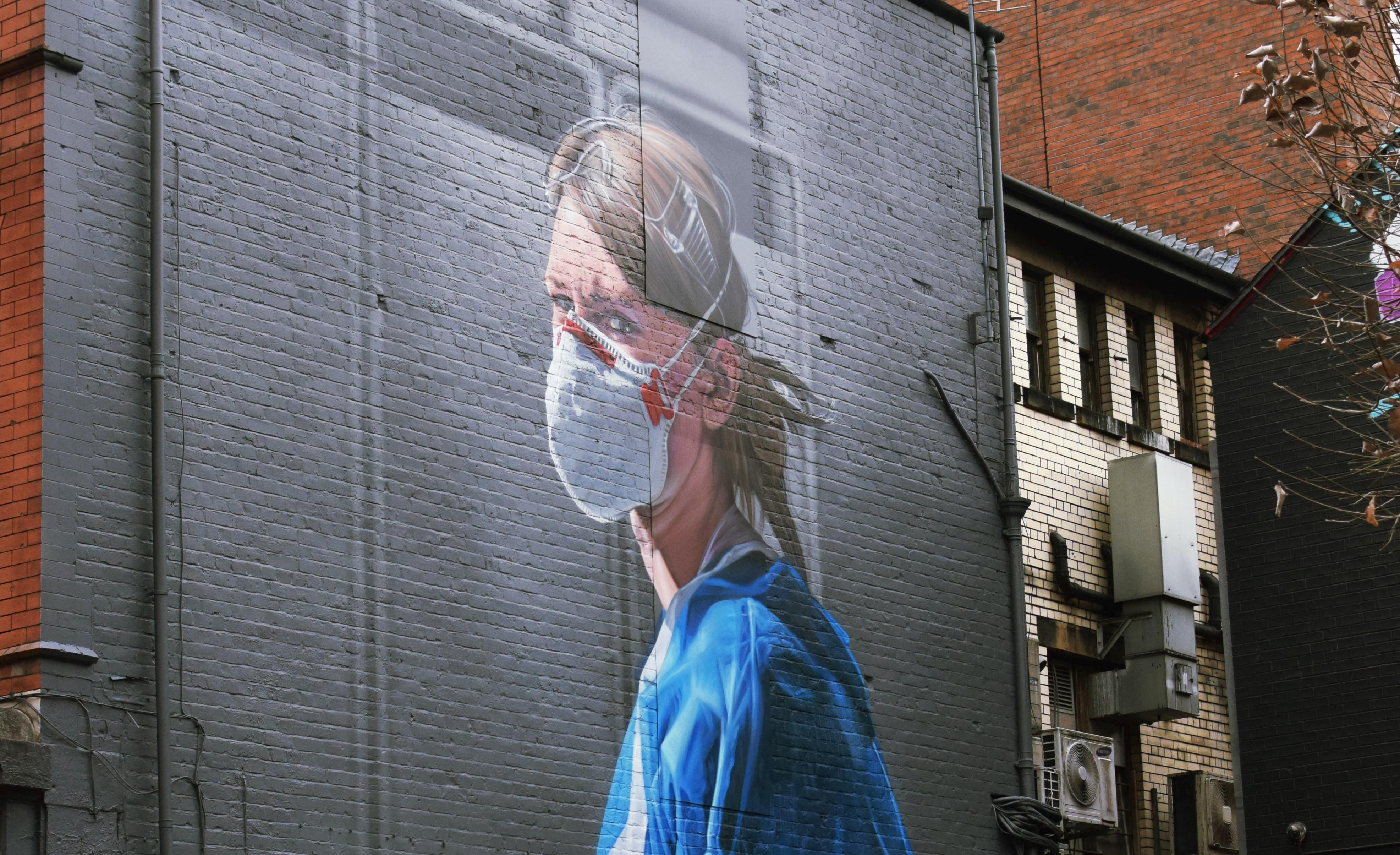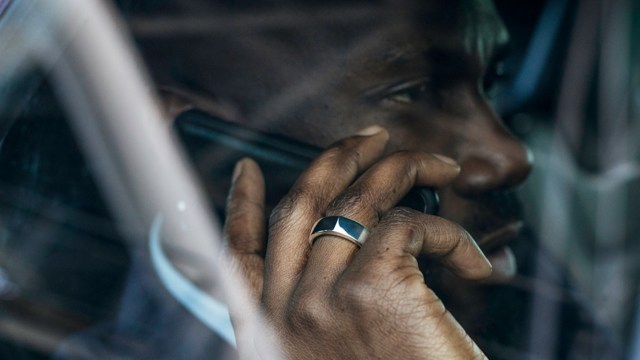The internet’s top 12 coronavirus-related questions, answered

- With mixed messages coming from our leaders, Americans have turned to the internet to answer their COVID-19 questions.
- We explore the top 12 coronavirus questions, according to Google Trends.
- When seeking answers, it is important to prioritize evidence-based information from credible sources.
It seems the only thing spreading faster than coronavirus is panic and disinformation. With mixed messages and conflicting reports coming from leaders, Americans have turned to the internet to address their most pressing concerns.
According to Google Trends, here are the coronavirus-related questions Americans want answers to the most.

1) What is coronavirus/COVID-19?
Coronaviruses are a large family of viruses known to cause illness in humans and animals. In people, they are responsible for a range of respiratory infections. Some are as mild as the common cold, while more severe infections include Middle East Respiratory Syndrome (MERS) and the Severe Acute Respiratory Syndrome (SARS).
This most recent strain of coronavirus is severe acute respiratory syndrome coronavirus 2 (SARS-CoV-2). It gives rise to COVID-19, the disease causing the current pandemic.
This new strain was first discovered in Wuhan, China, in December 2019. Scientists believe it originated in bats and may have leaped to humans through an intermediate, likely a pangolin, at a Chinese wet market. Despite conspiracy theories claiming the virus was engineered in a laboratory, no evidence exists to suggest such an origin.
COVID-19 symptoms may appear 2–14 days after exposure and include fever, cough, and shortness of breath. In children, the symptoms are reported to be cold-like. The Centers for Disease Control and Prevention (CDC) recommends immediate medical attention if you develop emergency warning signs. These include trouble breathing, confusion, inability to arouse, bluish lips or face, or persistent pain in the chest.
2) How many cases of coronavirus in the U.S./my state?
For national numbers, we recommend checking the CDC’s website, which is updated at noon, Mondays through Fridays. As of this writing, the United States had 54,453 total cases resulting in 737 deaths.
If you are looking closer to home, visit your state or local health department websites. Local health department websites are the best resources for news and recommendations specific to your area. They can inform you about public health guidance, school closures, local COVID-19 test information, and what to do should you or a loved one develop symptoms.
3) When will coronavirus peak in the U.S.?
The honest answer: We don’t know. There are too many variables at play. For example, much remains unknown about the virus—such as how seasonal change alters its spread or why infected children rarely become critically ill—and epidemiologists don’t know how many Americans have been infected due to limited testing that has lagged well behind other countries.
“It depends if a week from now, we look like Italy or South Korea,” Caitlin Rivers, an epidemiologist at the Johns Hopkins Center for Health Security, told the Washington Post.
As reported by the New York Times, Columbia University researchers modeled how the U.S. outbreak may evolve. They proposed three scenarios for how the outbreak could spread (based on what is currently known).
With no control measures, the U.S. could see 500,000 new cases per day by mid-May. With some control measures, new cases could be restrained to about 300,000 new cases per day by mid-June. If severe control measures are taken, we could hinder the outbreak to a few thousand per day throughout the summer.
Although we can’t answer this question with certainty, we should prepare for the current state to last for weeks, maybe months. And even after the first wave, it’s possible for a second or third wave of outbreaks to follow.
“For a while, life is not going to be the way it used to be in the United States,” Anthony Fauci, director of the National Institute of Allergy and Infectious Diseases, told CNN. “We have to just accept that if we want to do what’s best for the American public.”

Coronavirus may stay airborne, but it mainly spreads person-to-person through respiratory droplets like those produced in a sneeze.
4) Is coronavirus airborne?
There are conflicting reports as to whether the new coronavirus can remain airborne. As reported by Stat, some studies suggest the new coronavirus can exist as an aerosol—a liquid (fog) or solid (virus) that suspends in the air—under certain conditions and for a limited amount of time. One study suggests the virus can drift for about a half-hour. Another suggests up to three hours.
However, other research has found no airborne coronavirus in hospital rooms of COVID-19 patients. This research suggests the virus can stay airborne only long enough for the respiratory droplets to be pulled down by gravity. A few seconds at most.
“I think the answer will be, aerosolization occurs rarely but not never,” Stanley Perlman, a microbiologist at the University of Iowa, told Stat. “You have to distinguish between what’s possible and what’s actually happening.”
Coronavirus may be able to stay airborne for a time; however, it mainly spreads person-to-person or through infected surfaces. Once the virus does come to rest, it can live on surfaces for much longer than in the air. It can linger on copper for four hours, cardboard for a day, and plastics and stainless steel for two to three days.
5) How do I sew a face mask?
Update April 3, 2020: The CDC has updated its face masks guidelines in light of recent studies that suggest cloth face coverings can help slow the spread of coronavirus. The CDC now recommends people wear cloth face masks “in public settings where other social distancing measures are difficult to maintain (e.g., grocery stores and pharmacies)” and “especially in areas of significant community-based transmission” [emphasis original]. The face masks recommended are not N-95 respirators, which should be reserved for health care workers. People who wear cloth face masks, the CDC notes, should still take other precautions such as maintaining six-feet distance and washing hands.
Generally, you don’t need to sew a face mask, but there are many tutorials available on YouTube. According to the CDC, handmade face masks are not considered personal protective equipment and how well they protect against coronavirus, if at all, is unknown.
Some hospitals and healthcare facilities have requested donations of handmade masks as N95 respirators face a critical shortage. Even then, the CDC only recommends its use for patient care as a last resort. The agency urges healthcare professionals who choose this option to exercise caution and only use hand-sewn masks in combination with a face shield that covers the entire face.
If you want to donate handmade face masks, follow the instructions on your local healthcare facility’s website.
Whether you choose to wear a handmade mask is up to you, but only do so with a clear understanding of the limitations.
Don’t assume you are protected from coronavirus; such presumptions can put you and others at risk. You need to take every precaution with a handmade face mask that you would without one—wash hands, don’t touch your face, avoid close contact, stay home if sick, etc.
Don’t assume adding additional filters or filtering materials improves protection. There is no evidence to suggest this is true. Finally, don’t assume any handmade mask came from a sterile environment. Wash it before use.

Under shelter-in-place orders, non-essential businesses have closed, while essential businesses have modified how they operate to promote social distancing.
6) What are the rules under shelter-in-place?
Shelter-in-place orders are public announcements that set restrictions and protocols based on a public threat. They can be announced in response to mass shootings, natural disasters, and, in this case, pandemics. Despite some conspiracy theories out there, they are not a form of martial law.
Shelter-in-place orders in response to the coronavirus have been issued with social distancing in mind. Non-essential businesses have been shuttered, while residents have been asked to stay in their homes unless traveling for essential tasks, such as going to work or to buy groceries. Exercise outside of the house is encouraged if people keep their distance.
These orders are enforceable. California’s stay-at-home order, for example, cites that violators can be charged with a misdemeanor, which could result in a fine up to $1,000 and six months in jail. However, such enforcement presents a myriad of obstacles, cannot be thorough, and will likely not occur.
During a press conference, California Governor Gavin Newsom stated that “social pressure” is the preferred method of enforcement. “I don’t believe the people of California need to be told through law enforcement that it’s appropriate just to home isolate,” he said.
7) Are restaurants/grocery stores open?
For the most part, yes. Shelter-in-place orders allow essential businesses to continue operating. According to the Cybersecurity and Infrastructure Security Agency, there are 16 critical infrastructure sectors. These include energy, transportation, communications, healthcare, and food and agriculture.
While local guidelines may differ, most will be similar. Washington’s shelter-in-place order, for example, allows grocery stores, pharmacies, farmers markets, and even corner stores to stay open. Restaurants can operate, but they cannot let patrons dine in. Only carry-outs and deliveries are permitted. New York City’s shelter-in-place order has the same stipulations.

HUD has authorized an immediate moratorium on foreclosures, while state governments attempt to prevent renter evictions.
8) Can I be evicted during a national emergency?
Foreclosures and evictions can still happen during a national emergency; however, agencies and state governments are taking steps to prevent an impending spike in evictions.
The U.S. Department of Housing and Urban Development has authorized an immediate freeze on foreclosures and evictions for single-family homeowners with FHA-insured mortgages. The moratorium will be in effect for the next 60 days.
The National Multifamily Housing Council and National Apartment Association sent a letter to Congress advocating for housing assistance measures such as emergency rental assistance, mortgage forbearance, and eviction prevention.
Meanwhile, state governments and local agencies have seen a deluge of action to impede homelessness. As reported by the New York Times, the Miami-Dade police said they wouldn’t carry out evictions, a New York State judge declared no eviction cases would be considered in court, and a California executive order freed cities to create eviction moratoriums.
“The very least policymakers can do during a national health emergency is ensure that more people are not pushed into homelessness through evictions or foreclosures, particularly when our collective protection against the spread of the illness depends on our ability to self-isolate at home,” Diane Yentel, President and CEO of the National Low Income Housing Coalition, told the Times in an interview.
9) What jobs are hiring right now?
While many businesses have been forced to shutter their doors, some companies are ramping up hiring. As reported by Fortune, most of these are in sectors experiencing pandemic-induced demand. GE Healthcare, for example, needs staff to meet the demand for ventilators and critical medical supplies.
More locally, major retailers are hiring to maintain staff and supply-chain flow. These include drugstores such as CVS and Walgreens; grocery store chains such as Albertsons, Kroger, and Instacart; and, of course, major retailers such as Amazon and Walmart.
Many of these jobs are temporary positions, but they may help families weather the outbreak until business returns to something more in-line with normal.
10) When are taxes due in the U.S.?
On March 21, the Treasury Department and Internal Revenue Service announced an extension for federal income tax filings. The new due date is July 15, giving Americans an extra three months to put off filing their tax returns. Federal income tax payments due on April 15 have received the same extension, without penalties or interest.
“Even with the filing deadline extended, we urge taxpayers who are owed refunds to file as soon as possible and file electronically,” IRS Commissioner Chuck Rettig said in a release.
He added: “Filing electronically with direct deposit is the quickest way to get refunds. Although we are curtailing some operations during this period, the IRS is continuing with mission-critical operations to support the nation, and that includes accepting tax returns and sending refunds.”
Americans do not need to file additional forms to qualify; however, those who need additional time beyond July 15 will need to make an extension request.
11) Who will receive stimulus checks?
As of this writing, no one. On March 24, the Senate voted against the Coronavirus Act, Relief, and Economic Security Act (CARES Act) for the second time. The bill requires 60 votes to advance, and Republicans and Democrats are currently at loggerheads over provisions. On March 25, partisan bickering gave way to a potential deal, but the Senate has yet to finalize and pass the bill.
According to the think tank Tax Foundation, in its current form, the bill would provide a recover rebate for individual taxpayers in the form of a $1,200 refundable tax credit ($2,400 for joint payers). Families will also receive $500 per child.
However, that rebate phases out as an individual’s income goes up. The phase out begins at $75,000 for individuals, $112,500 for heads of household, and $150,000 for joint payers. It lessens the rebate by $50 per every addition $1,000 earned. The rebate phases out entirely at $99,000 (individuals) and $198,000 (join payers).
Tax Foundation estimates this will decrease federal revenue by $301 billion.
12) Are U.S. Senators in quarantine?
Senator Rand Paul did test positive for coronavirus. While he is in self-quarantine today, he did not quarantine himself while awaiting his test results. He interacted closely with other senators and reportedly even took a dip in the Senate swimming pool.
Because of their interactions with Paul, Senators Mike Lee and Mitt Romney have also entered self-quarantine, though they are not showing symptoms. Senators Cory Gardner and Rick Scott have self-quarantined as well, though their potential exposure is not related to Paul.
Despite these absences, as of this writing, Congress remains in session.
A time questions and concerns
Of course, there are many other questions left to be answered, but be careful where you find those answers. Don’t listen to hearsay or let social media memes inform your decisions. Be wary of snake oil salesmen looking to make a quick buck on panic and disinformation.
Instead, get your information from the CDC’s coronavirus website, state and local health departments, and reliable news outlets like NPR, the New York Times, and the Wall Street Journal.
Stay healthy, stay safe.







